
Introduction to Archimedes' principle and buoyant force. Created by Sal Khan.
- Subject:
- Physical Science
- Physics
- Material Type:
- Lesson
- Provider:
- Khan Academy
- Provider Set:
- Khan Academy
- Author:
- Sal Khan
- Date Added:
- 06/01/2021

Introduction to Archimedes' principle and buoyant force. Created by Sal Khan.

Students explore the interface between architecture and engineering. In the associated hands-on activity, students act as both architects and engineers by designing and building a small parking garage.

Learn about the effects of a changing climate on the Arctic ecosystem and four of its well-known mammals: the polar bear, the walrus, the Arctic fox and the beluga whale.
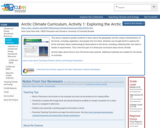
This lesson sequence guides students to learn about the geography and the unique characteristics of the Arctic, including vegetation, and people who live there. Students use Google Earth to explore the Arctic and learn about meteorological observations in the Arctic, including collecting their own data in hands-on experiments. This is the first part of a three-part curriculum about Arctic climate.
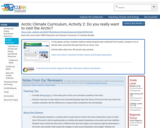
In this jigsaw activity, students explore meteorological data collected from Eureka, Canada to try to decide when would be the best time for an Arctic visit.
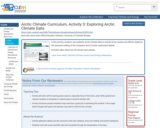
In this activity, students use authentic Arctic climate data to unravel some causes and effects related to the seasonal melting of the snowpack and to further understand albedo.
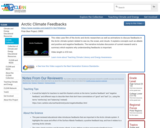
This video uses film of the Arctic and Arctic researchers as well as animations to discuss feedbacks in the Arctic climate system related to sea ice, the ocean, and clouds. It explains concepts such as albedo and positive and negative feedbacks. The narrative includes discussion of current research and a summary which explains why understanding feedbacks is important.
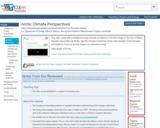
This video, along with a background essay, focuses on impacts of climate change on the lives of Native Alaskans around Barrow, Alaska. Specific changes include the timing of the changes in the formation and breakout of sea ice and the impacts on subsistence living.
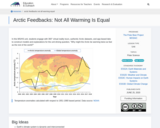
In this middle school and high school unit, students engage with 360° virtual reality tours, authentic Arctic datasets, and app-based labs to construct models and explanations for the unit driving question, "Why might the Arctic be warming twice as fast as the rest of the world?"
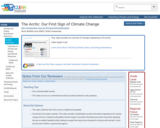
This video provides an overview of changes happening in the Arctic.
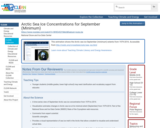
This animation shows the Arctic sea ice September (minimum) extents from 1979-2016. Accessible from http://nsidc.org/cryosphere/sotc/sea_ice.html
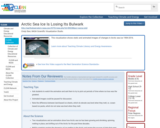
This visualization shows static and animated images of changes in Arctic sea ice 1984-2016.
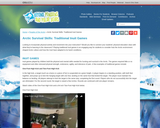
This article describes several traditional Inuit games and provides background information and resources for incorporating them into a lesson or unit on Inuit culture.
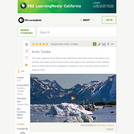
This video segment from Wild Europe: "Wild Arctic" explores the struggle for survival in one of Earth's most extreme environments.
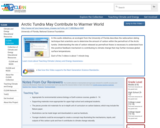
In this audio slideshow, an ecologist from the University of Florida describes the radiocarbon dating technique that scientists use to determine the amount of carbon within the permafrost of the Arctic tundra. Understanding the rate of carbon released as permafrost thaws is necessary to understand how this positive feedback mechanism is contributing to climate change that may further increase global surface temperatures.
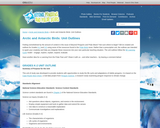
This article assembles free resources from the Arctic and Antarctic Birds issue of the Beyond Penguins and Polar Bears cyberzine into a unit outline based on the 5E learning cycle framework. Outlines are provided for Grades K-2 and 3-5.

This informational text introduces students to similarities and differences in the North and South Poles. The text is written at a grade one through two reading level. This is a PDF containing the informational text and a glossary.
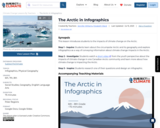
SYNOPSIS: This lesson introduces students to the impacts of climate change on the Arctic.
SCIENTIST NOTES: This lesson demonstrates the impacts of climate change on the Arctic region and thus provides a background for students to reflect on the causal relationship between temperature changes and ice melting, glaciers, permafrost, and sea level rise. Accordingly, this lesson is interactive, properly cited, and has passed our science credibility.
POSITIVES:
-This lesson situates the Arctic globally and introduces students to people who call the Arctic home, including youth.
-Alongside climate change, students learn about infographics as a way to understand and share information.
ADDITIONAL PREREQUISITES:
-For the game “Is It an Infographic?” game, teachers should present the Teacher Slideshow in slideshow mode to conceal the answer at first glance.
-When teaching this lesson, teachers should have a baseline understanding of how climate change works. This short interactive course offers easy-to-understand information on the basics of climate change.
-Teachers will need to plan ahead for the gallery walk.
DIFFERENTIATION:
-If teachers would like to spend more time on the infographic, both in teaching about infographics as a way to share information and on how to create an infographic, this website is an excellent resource.
-Infographic creation could be digital, adding technology skills to the outcomes, if students have access to technology and the appropriate software.
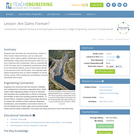
Students learn that dams do not last forever. Similar to other human-made structures, such as roads and bridges, dams require regular maintenance and have a finite lifespan. Many dams built during the 1930-70s, an era of intensive dam construction, have an expected life of 50-100 years. Due to inadequate maintenance and/or for environmental reasons, some of these dams will fail or be removed in the next 50 years. The engineers with Splash Engineering have an ethical obligation to remind Thirsty County of the maintenance and lifespan concerns associated with its dam.
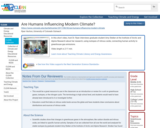
In this short video, host Dr. Ryan interviews graduate student Amy Steiker at the Institute of Arctic and Alpine Research about her research, using isotopes of nitrous oxide, connecting human activity to greenhouse gas emissions.